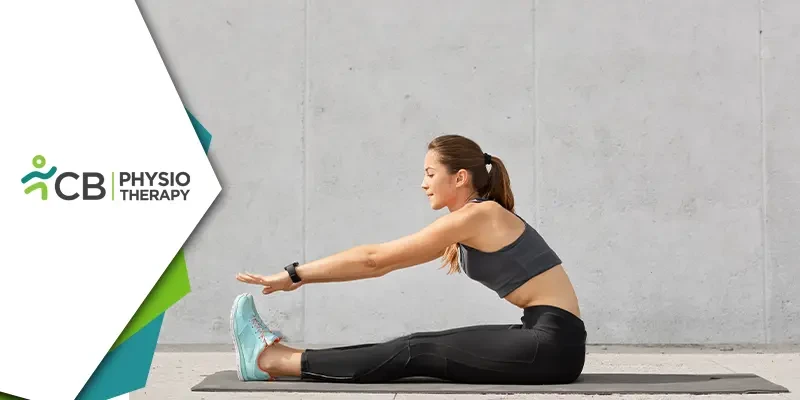Our bodies are incredible machines, capable of complex movements and feats of strength. But just like any machine, they need regular maintenance to function optimally. Physiotherapy stretching exercises are a powerful tool in this maintenance toolbox, offering a range of benefits that extend far beyond simply improving flexibility.
Benefits of Stretching
Physiotherapy stretches, unlike ballistic stretches you might see in some fitness routines, are slow controlled movements designed to lengthen muscles and improve range of motion. Incorporating these stretches into your routine can have a significant impact on your physical and mental well-being.1: Enhanced Flexibility and Range of Motion
The most apparent benefit of physiotherapy stretching is the increased flexibility and range of motion it provides. Tight muscles can restrict movement, leading to imbalances and potential injuries. Stretching helps elongate these muscles, allowing for smoother, more efficient movement in everyday activities and exercise. Whether you're reaching for a high shelf or aiming for a deeper squat, improved flexibility makes it all easier.
2: Reduced Pain and Muscle Soreness
Tight muscles often contribute to pain and discomfort. Stretching helps alleviate this tension, promoting blood flow and reducing muscle soreness. This is particularly beneficial after exercise, when muscles are fatigued and prone to tightness. Regularly incorporating stretches into your cool-down routine can significantly reduce post-workout soreness.
3: Improved Posture and Body Alignment
Poor posture can lead to a cascade of problems, from back pain to headaches. Stretching exercises that target tight muscles in the chest, shoulders, and hips can help improve your posture by pulling your body back into proper alignment. This not only reduces pain but also enhances your overall physical appearance.
4: Injury Prevention
Tight muscles are more susceptible to tears and strains. By keeping your muscles flexible and loose, physiotherapy stretches can help prevent these common injuries. Additionally, improved flexibility allows for better control over your movements, which can further reduce your risk of injury during exercise or daily activities.
5: Enhanced Performance
Whether you're a weekend warrior or a competitive athlete, improved flexibility can translate to better performance. Increased range of motion allows for more powerful movements, improved agility, and better technique. Stretching can also help reduce muscle fatigue, allowing you to train harder for longer.
6: Stress Reduction and Relaxation
The benefits of physiotherapy stretches extend beyond the physical. The slow, controlled movements involved in stretching can have a calming effect on the mind and body. By focusing on your breath and the sensations in your muscles, stretching can help reduce stress and promote relaxation. This improved mood and mental well-being can positively impact all aspects of your life.
Putting Stretching into Practice
Now that you're aware of the numerous benefits of physiotherapy stretching, it's time to incorporate them into your routine. Here are some key points to remember:1: Warm Up Before You Stretch: Always warm up your muscles with light cardio for 5-10 minutes before stretching. Cold muscles are more prone to injury.
2: Listen to Your Body: Stretch to the point of feeling a gentle tension, not pain. Pushing yourself too far can be counterproductive.
3: Hold the Stretch: Hold each stretch for 15-30 seconds, focusing on slow, deep breaths.
4: Breathe Deeply: Proper breathing during stretches helps to relax your muscles and maximize the benefits.
5: Consistency is Key: Aim to incorporate stretching into your routine at least 2-3 times per week for optimal results.
Finding the Right Stretches for You
There are numerous physiotherapy stretches that target different muscle groups. Here are some basic stretches to get you started:1: Neck Stretch: Gently tilt your head to one side, bringing your ear towards your shoulder. Hold for 15-30 seconds and repeat on the other side.
2: Chest Stretch: Clasp your hands behind your back and gently lift your arms towards the ceiling. Hold for 15-30 seconds.
3: Quad Stretch: Stand on one leg and gently pull your foot towards your glutes, holding onto your ankle or calf muscle. Hold for 15-30 seconds and repeat on the other side.
4: Hamstring Stretch: Sit on the floor with one leg extended and the other bent. Reach for your toes on the extended leg, keeping your back straight. Hold for 15-30 seconds and repeat on the other side.
5: Calf Stretch: Stand on a step with the balls of your feet on the edge and your heels hanging off. Lower your heels down slowly and hold for 15-30 seconds.
Remember, this is just a starting point. Consulting a physiotherapist can help you develop a personalized stretching routine that addresses your specific needs and goals. Physiotherapy stretching exercises are a valuable tool for anyone looking to improve physical and mental well-being. By incorporating these stretches into your routine, you can unlock your body's full

